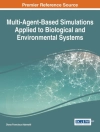The Smart Estate
Bring your estate management methods into the future with this accessible guide
Building information modeling, or BIM, is a catch-all term for a wide array of tools and processes for creating digital representations of buildings or building components. These tools have been widely embraced for use in the construction phase of projects, but their potential has only begun to be realized in facility management and maintenance, even though these account for 85% of costs in the life cycle of a building. Organizations controlling diverse estates with multiple buildings of varying ages stand to benefit enormously from a BIM-informed approach to estate management.
The Smart Estate outlines such an approach and its potential to improve facility and estate management. Emphasizing practical applications, it moves beyond the project delivery stage to focus on the much longer — and costlier — period of building operation and maintenance. The result is a thorough and accessible guide to generating collaborative, BIM-informed methods.
The Smart Estate readers will also find:
* Case studies and real-world scenarios illustrating best practices
* Detailed discussion particularly suited to the needs of large-scale or public-sector organizations
* Detailed step-by-step guide to developing a BIM-informed approach to a given asset portfolio
The Smart Estate is ideal for professionals in construction management and facilities management, as well as for advanced students and professionals in all construction related disciplines.
表中的内容
About the Authors xi
Foreword xii
Acknowledgements xiii
1 The Smart Estate: Collaborative Working with Digital Information Management 1
2 Introduction and Background to Collaborative Working and Partnering 17
3 The Importance of Trust, Collaboration, and Partnering for the Built Environment 31
4 Analysis for the Lack of Collaborative Working and Partnering in the Built Environment 45
5 Potential Risks, Problems, and Barriers for Collaborative Working in Estates and the Built Environment 57
6 Collaborative Working with Digital Information Management in Estates and Construction 67
7 Technologies for Collaborative Digital Information Management in Estates and Construction 79
8 Infrastructures for Collaborative Digital Information Management for Estates 89
9 Actors in Digital Information Management for Estates 107
10 The Role of Digital Technology in Healthcare Facilities Management 121
11 An Introduction to Smart Estates and Digital Information Management for Collaboration in the Built Environment Using Case Studies 141
12 The Benefits and Value of Digital Twin Technologies for Collaborative Information Management 163
13 Digital Twin Enablers for Collaboration and the Risks and Barriers to Adoption of Digital Twins 175
14 Reflections, Overview, and Implications for Future Practice and Closing Remarks 193
Index 215
关于作者
Jason Challender is Director of Estates and Facilities at the University of Salford, a member of its Senior Leadership Team and Visiting Professor at the University of Bolton. He has over 30 years’ experience in procurement in a variety of major construction programmes and is a board member of the North West Construction Hub.
Akponanabofa Henry Oti is a lecturer in civil engineering at the University of Bolton, where he teaches a communications technology module, introducing students to information modelling using emerging BIM methodology, and BIM applications in construction project management and environmental management.












